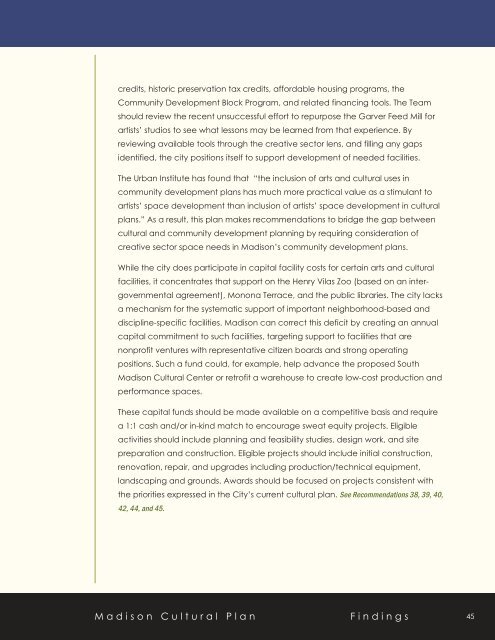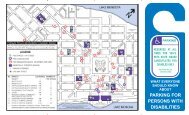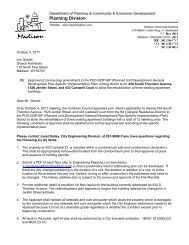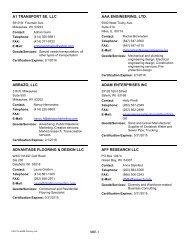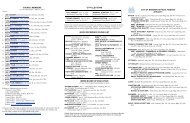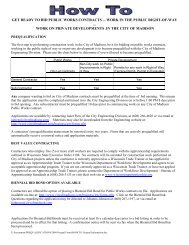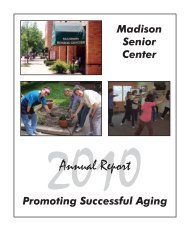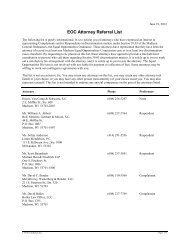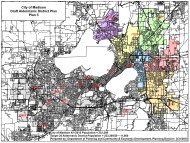Madison Cultural Plan 2011 - City of Madison, Wisconsin
Madison Cultural Plan 2011 - City of Madison, Wisconsin
Madison Cultural Plan 2011 - City of Madison, Wisconsin
You also want an ePaper? Increase the reach of your titles
YUMPU automatically turns print PDFs into web optimized ePapers that Google loves.
credits, historic preservation tax credits, affordable housing programs, the<br />
Community Development Block Program, and related financing tools. The Team<br />
should review the recent unsuccessful effort to repurpose the Garver Feed Mill for<br />
artists’ studios to see what lessons may be learned from that experience. By<br />
reviewing available tools through the creative sector lens, and filling any gaps<br />
identified, the city positions itself to support development <strong>of</strong> needed facilities.<br />
The Urban Institute has found that “the inclusion <strong>of</strong> arts and cultural uses in<br />
community development plans has much more practical value as a stimulant to<br />
artists’ space development than inclusion <strong>of</strong> artists’ space development in cultural<br />
plans.” As a result, this plan makes recommendations to bridge the gap between<br />
cultural and community development planning by requiring consideration <strong>of</strong><br />
creative sector space needs in <strong>Madison</strong>’s community development plans.<br />
While the city does participate in capital facility costs for certain arts and cultural<br />
facilities, it concentrates that support on the Henry Vilas Zoo (based on an intergovernmental<br />
agreement), Monona Terrace, and the public libraries. The city lacks<br />
a mechanism for the systematic support <strong>of</strong> important neighborhood-based and<br />
discipline-specific facilities. <strong>Madison</strong> can correct this deficit by creating an annual<br />
capital commitment to such facilities, targeting support to facilities that are<br />
nonpr<strong>of</strong>it ventures with representative citizen boards and strong operating<br />
positions. Such a fund could, for example, help advance the proposed South<br />
<strong>Madison</strong> <strong>Cultural</strong> Center or retr<strong>of</strong>it a warehouse to create low-cost production and<br />
performance spaces.<br />
These capital funds should be made available on a competitive basis and require<br />
a 1:1 cash and/or in-kind match to encourage sweat equity projects. Eligible<br />
activities should include planning and feasibility studies, design work, and site<br />
preparation and construction. Eligible projects should include initial construction,<br />
renovation, repair, and upgrades including production/technical equipment,<br />
landscaping and grounds. Awards should be focused on projects consistent with<br />
the priorities expressed in the <strong>City</strong>’s current cultural plan. See Recommendations 38, 39, 40,<br />
42, 44, and 45.<br />
<strong>Madison</strong> <strong>Cultural</strong> <strong>Plan</strong> Findings<br />
45


